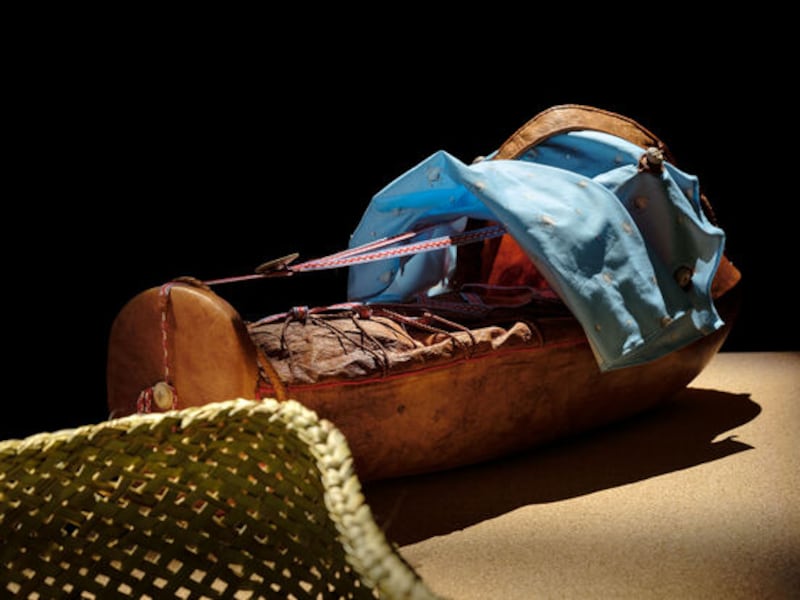An indigenous artist from Sápmi has partnered with a Māori carver in Aotearoa to explore and learn new crafting techniques and knowledge for an upcoming art exhibtion.
Architecture of Aroha is a collaboration between Sámi and Māori artists who have created two culturally significant objects: the wahakura and the gietkka, traditional baby vessels from each community.
Traditionally, the wahakura and gietkka were used to provide babies with a safe space to sleep and rest, made from materials sourced from the environment. The exhibition displays the shared cultural values and knowledge between these communities, including the similarities in their traditions and craftsmanship.
Duodji (Sámi craftperson) Guvor Guttorm came to Aotearoa after a successful showcase of Architecture of Aroha in Sweden earlier this year.
While they hoped to extend the exhibition to Tāmaki Makaurau, they were unable to bring the original gietkka, so she teamed up with Māori carver Ngaroma Riley (Te Rarawa, Te Aupōuri) to craft a new gietkka specifically for the display.

Riley said she worked alongside Guttorm, learning new tools and carving techniques, especially since it was both her and Guttorm’s first time working with Elm timber.
“It’s wet. So we’re working with wet material and experimenting and guessing how the wood will behave.”
The change in temperature and environment is a big shift for Guttorm, as Aotearoa has the opposite climate from Sápmi, the traditional land of the Sámi people, which spans Norway, Finland, Sweden, and parts of Russia.
The materials for a gietkka are sourced from the natural environment, including reindeer hide and moss, while a wahakura is woven from harakeke found in Aotearoa.
Working together
Both artists typically work solo on projects, so this collaboration was a new experience for them.
“I work alone with the material, but this time we’ve actually been working together. One of us is at one end of the gietkka, and the other is at the other end. Then, we meet in the middle,” Guttorm said.
Riley said it had been a rewarding experience to watch Guttorm at work, particularly with someone of her expertise.
The exhibtion will be on display from November 30 to March next year.



